Class 11 biology Chapter 3 Kingdom Plantae Textbook solutions
Understanding each topic in biology helps students identify their strengths and weaknesses, which is essential for effective exam preparation. That’s why we bring you Class 11 biology Chapter 3 Kingdom Plantae Textbook solutions (Maharashtra State Board) with simple, step-by-step detailed explanations. These solutions are highly popular among Class 11 students, as they make it easy to grasp even the most difficult topics in the chapter. Whether you’re looking to complete your homework quickly or preparing for competitive exams like NEET, MHT-CET, and various medical entrance examinations, these Kingdom Plantae solutions are the perfect study resource.
All answers are based strictly on the official Class 11 Biology textbook and follow the latest Maharashtra State Board syllabus. The Biology Textbook Solutions of Class 11 Chapter 3 – Kingdom Plantae are available for free, ensuring every student can access quality study materials without any cost. These solutions not only strengthen your conceptual understanding but also help in quick revisions before tests or board exams. Created by subject matter experts, these Biology textbook solutions are 100% accurate and aligned with exam requirements.
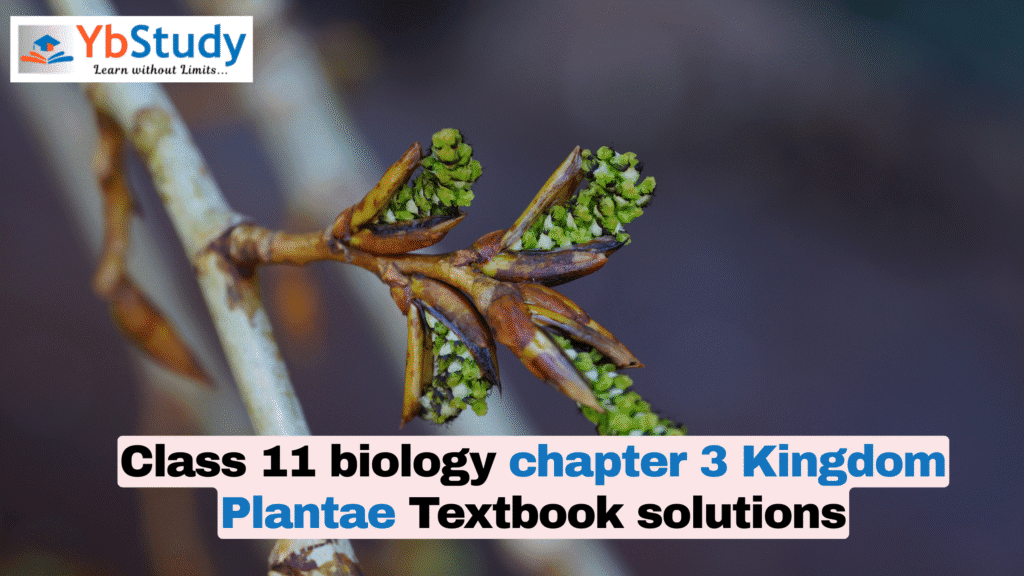
Whether you’re aiming to score well in your school exams or crack competitive entrance tests, the Class 11 Biology Chapter 3 Kingdom Plantae solutions will give you the clarity and confidence you need to succeed.
Class 11 Biology Chapter 3 Kingdom Plantae Textbook Solutions
1. Choose Correct Option
A. Which is the dominant phase in Pteridophytes?
a. Capsule
b. Gametophyte
c. Sporophyte
d. Embryo
B. The tallest living gymnosperm among the following is ……….
a. Sequoia sempervirens
b. Taxodium mucronatum
c. Zamia pygmaea
d. Ginkgo biloba
C. In Bryophytes ……….
a. Sporophyte and gametophyte generation are independent
b. Sporophyte is partially dependent upon gametophyte
c. Gametophyte is dependent upon Sporophyte
d. Ginlgo biloba
D. A characteristic of Angiosperm is ………
a. Colloteral vascular bundles
b. Radial vascular bundles
c. Seed formation
d. Double fertilization
E. Angiosperms and Gymnosperms resemble in having ……….
a. Vessels in wood
b. Mode of nutrition
c. Siphonogamy
d. Nature of seed
2. How you place the pea, jawar and fern at its proper systematic position? Draw a flow chart with example of.
Answer: The positions where we can place pea, jowar, and fern are shown below:
(1) Pea can be placed in the taxon of Phanerogamae. It is beacause peas produces seeds. The pea plants bears flowers so can be put under the angiosperms. Peas belong to dicotyledonous plants.
(2) Jowar also can be placed in Phanerogams and in angiosperms. But jowars are monocotyledons.
(3) Fern do not produce seeds so they can be kept under cryptogames and in pteridophytes.
4. Differentiate between Dicotyledonae and Monocotyledonae based on the following characters
a. Type of roots
b. Venation in the leaves
c. Symmetry of flower
Answer: The differences based on the given points are:
1. Type of roots – Monocots have fibrous root system whereas dicots mostly have a tap root system.
2. Venation in the leaves – Monocots have long and narrow leaves along with parallel veins, whereas dicots have broad leaves with a network of veins( reticulate venation).
3. The symmetry of flowers- In monocots, the flowers are arranged in three to six-fold symmetry whereas, in case of dicots, they are arranged in whorls.
5. Answer the Following Auestions
A. We observe that land becomes barren soon after monsoon. But in the next monsoon it flourishes again with varieties we observed in season earlier. How you think it takes place?
Answer: The first rain of year in acidic because of the smoke released from factories. the acid rain destroy the bricks, cement exetra so the acid rain also destroy land. the acid rain also make bacteria and fungi that eat organisms decompose. it makes soil fertilizer the rain after that is pure than before so it makes soil fertilizer the fertility of the harvesting soil is directly or indirectly.
B. Fern is a vascular plant. Yet it is not considered a Phanerogams. Why?
Answer: Fern is a vascular plant yet it is not considered in phanerogams because phanerograms are plants with distinct root and shoot system whereas the ferns that belong to the pteridophyte family is the beginning of separation into root and shoot system, though they are vascular their divisions are nit prominent.
C. Chlamydomonas is microscopic whereas Sargassum is macroscopic; both are algae. Which characters of these plants includes them in one group?
Answer: Chlamydomonas and Saragassum are algae that contains photosynthetic pigment for the process of photosynthesis. They belong to the same group because of the algae as they have thalloid plant body which states that the body of algae is not differentiated into roots and stem. Saragassum is brown algae and chalamydomonas is green algae.
D. Which of the following nuts will not be enclosed in fruits? What are the peculiar characteristics of these plants? Betel nut/ Areca nut, pine nut, walnut, almond, cashew nut, nutmeg.
Answer :
- Beetle nut / Areca is grown on palm tree but not on beetle vine as assumed.
- Pine nut cause anaphylactic reactions in some cases. These are edible seeds of pines.
- Walnuts are the edible parts of drupes so they are not considered as biological nuts.
- Almonds are native of Iran and Central Asia. It is also known as extract from stone fruit.
- Netmeg is the seed of plant Myristica. It is considered as ground spice.
6. Girth of a Maize plant does not increase over a period of time. Justify
Answer: Maize is a monocotyledonous plant. Cambium is responsible for the widening of girth in plants. Cambium is an example of lateral meristem which helps in growth of the secondary parts of the plant body. So due to the absence of cambium in maize plant there is no increase in their girth.
8. Draw neat labelled diagrams
A. Spirogyra
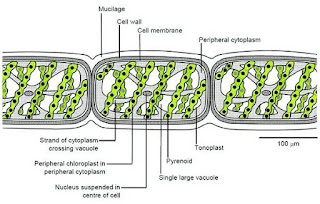
B. Chlamydomonas
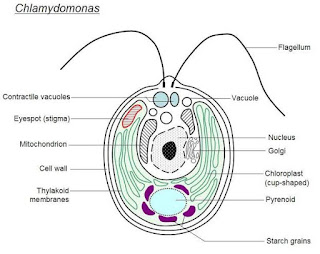
C. Funaria
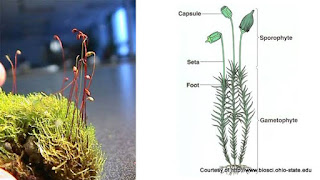
D. Nephrolepis
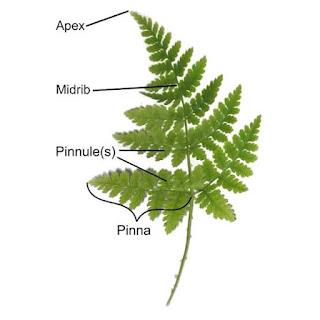
E. Haplontic and haplodiplontic life cycle
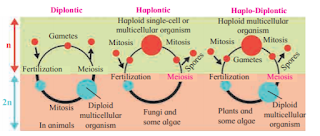
9. Identify the plant groups on the basis of following features.
A. Seed producing plants
Answer: Gymnosperms
B. Spore producing plants
Answer: Bryophytes and Pteridophytes
C. Plant body undifferenciated into Root, Stem and leaves
Answer: Algae or Thallophytes
D. Plant need water for fertilization
Answer: Bryophytes
E. First vascular plants
Answer: Pteridophytes
